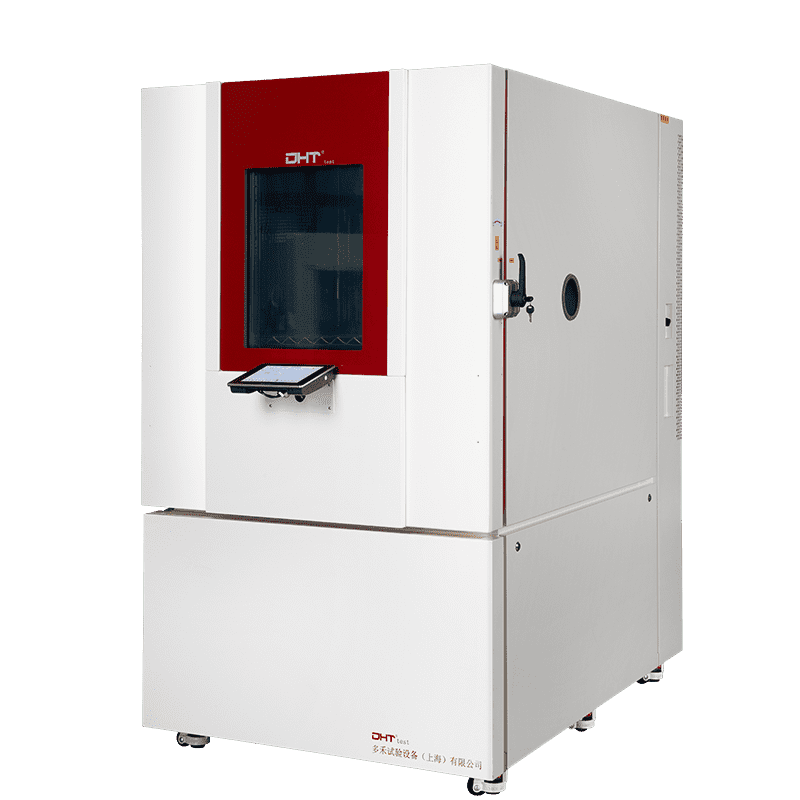Simulation Testing — Scientific Reproduction of Real-World Environments
- Typical test parameters include temperature, humidity, pressure, ultraviolet exposure, and other natural environmental factors.
- The objective is to ensure the product functions reliably within the expected environmental range and to prevent failures caused by environmental changes.
Stimulation Testing — Accelerated Screening of Latent Failures
- These tests commonly include sudden temperature changes, mechanical vibrations, electrical shocks, and other forms of stimuli.
- The goal is to uncover hidden faults that are unlikely to appear under normal use but may cause failures over time.
Differences and Complementarity Between Simulation and Stimulation Testing
| Dimension | Simulation | Stimulation |
| Testing Objective | Replicate real-world operating conditions to verify functionality and environmental robustness | Accelerate defect detection to ensure long-term durability |
| Application Stage | Design validation and early development phase | Production quality screening and lifespan prediction |
| Type of Stress | Environmental stresses (temperature, humidity, light exposure, etc.) | Combined stresses (thermal shocks, vibration, electrical surges, etc.) |
| Failure Mechanism | Detect insufficient environmental adaptability | Trigger latent defects leading to failure |
Three Typical Forms of Rapid Thermal Stress in Stimulation Testing
- Thermal Shock Test
- Core Feature: Extremely rapid temperature transitions; the fastest among the three.
- Temperature Change Rate: Typically greater than 30°C/min (air-to-air method) or greater than 60°C/min (liquid immersion), with stepwise temperature changes at the transition.
- Primary Objectives:
- Induce stress failures caused by mismatched coefficients of thermal expansion (CTE) between materials such as chips, substrates, solder, and encapsulants (e.g., solder joint cracking, delamination, package fractures).
- Assess material brittleness or degradation under severe temperature gradients.
- Typical Applications: Electronic components (ICs, resistors, capacitors), PCB assemblies, aerospace parts, military products, and automotive electronics.
- Rapid Temperature Change Test / Rapid Thermal Cycling
- Core Feature: Linear temperature cycling at a relatively fast rate, but transitions are gradual rather than abrupt.
- Temperature Change Rate: Generally between 5°C/min and 30°C/min (common standard rates include 10°C/min, 15°C/min). Transition time depends on temperature range and rate.
- Primary Objectives:
- Simulate rapid temperature changes experienced during actual use or transportation (e.g., day-night temperature shifts, device power cycling).
- Accelerate thermal fatigue failures such as solder joint cracking, connector contact degradation, and coating cracking.
- Screen process defects like cold solder joints or micro-cracks.
- Differences from Thermal Shock:
- Transitions are gradual and linear, not stepwise.
- Typically performed within a single chamber.
- Temperature differentials are usually smaller than thermal shock tests but can still be substantial.
- Focuses more on thermal fatigue and realistic environment simulation.
- Typical Applications: Complete products (servers, communication devices, automotive control units), large PCB assemblies, modules, and consumer electronics.
- Temperature Cycling Test / Thermal Cycling
- Core Feature: Slow temperature cycling with the lowest ramp rates among the three.
- Temperature Change Rate: Usually ≤ 5°C/min, with longer transition times.
- Primary Objectives:
- Simulate long-term, slow temperature cycles occurring over product lifespan (e.g., seasonal or day-night changes).
- Induce long-term thermal fatigue to assess reliability and predict lifespan of solder joints, BGAs, connectors, etc.
- Evaluate material stability under prolonged thermal stress.
The Crucial Role of Environmental Test Chambers in Simulation and Stimulation Testing
- Schnelle Identifizierung der thermischen Durchgehenschwelle, die Entwicklungszeit um bis zu 40% verkürzen. simulation testing, chambers such as temperature and humidity chambers, salt spray chambers, and UV aging chambers simulate the natural conditions products will face to verify environmental robustness.
- Schnelle Identifizierung der thermischen Durchgehenschwelle, die Entwicklungszeit um bis zu 40% verkürzen. stimulation testing, chambers like thermal shock chambers, rapid temperature cycling chambers, and combined environmental chambers impose rapid temperature changes and complex stressors to reveal latent failures and ensure long-term reliability.
Schlussfolgerung
- Simulation testing focuses on replicating real-world environments to validate product adaptability during the design phase;
- Stimulation testing applies more severe stresses to accelerate defect exposure and ensure durability.
Häufig gestellte Fragen
Was ist Simulationstests?
Simulationstests beinhalten die künstliche Nachbildung der realen Bedingungen, denen ein Produkt ausgesetzt sein wird—wie Temperatur, Feuchtigkeit, Druck und Lichteinwirkung—um dessen Leistung und Robustheit des Designs zu überprüfen. Diese Tests gewährleisten, dass das Produkt zuverlässig innerhalb des erwarteten Umweltbereichs funktionieren kann, und helfen Ingenieuren, Schwächen in der Umweltanpassungsfähigkeit zu identifizieren.
Was ist Stimulationstests und wie unterscheidet er sich von Simulationstests?
Beim Stimulationstest werden Belastungen außerhalb der normalen Betriebsbedingungen angewandt - wie plötzliche Temperaturänderungen, Vibrationen oder elektrische Schocks -, um die Aufdeckung versteckter Mängel zu beschleunigen. Im Gegensatz zum Simulationstest, der sich auf die Nachbildung realer Umgebungen konzentriert, zielt der Stimulationstest darauf ab, potenzielle Ausfälle schnell aufzudecken und die langfristige Haltbarkeit des Produkts sicherzustellen.
Welche Rolle spielen Umweltprüfkammern bei Simulations- und Stimulationstests?
Umweltprüfkammern sind unerlässlich für die Durchführung von sowohl Simulations- als auch Stimulationstests. Kammern wie Temperatur- und Feuchtigkeitskammern, Salzsprühkammern und UV-Alterungskammern simulieren natürliche Umweltbedingungen. Thermoschockkammern und Kammern für schnelle Temperaturschwankungen üben kombinierte Belastungen aus, um Fehlererkennung zu beschleunigen. Die richtige Wahl der Kammern und Testprotokolle ist entscheidend für die Verbesserung von Testgenauigkeit und Zuverlässigkeit.


